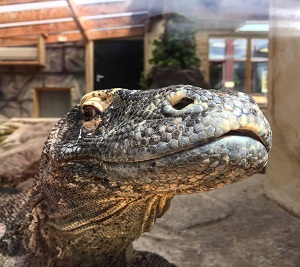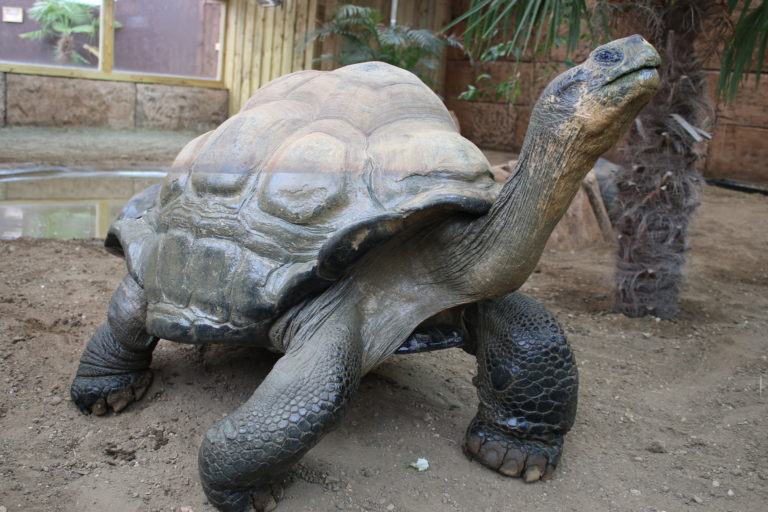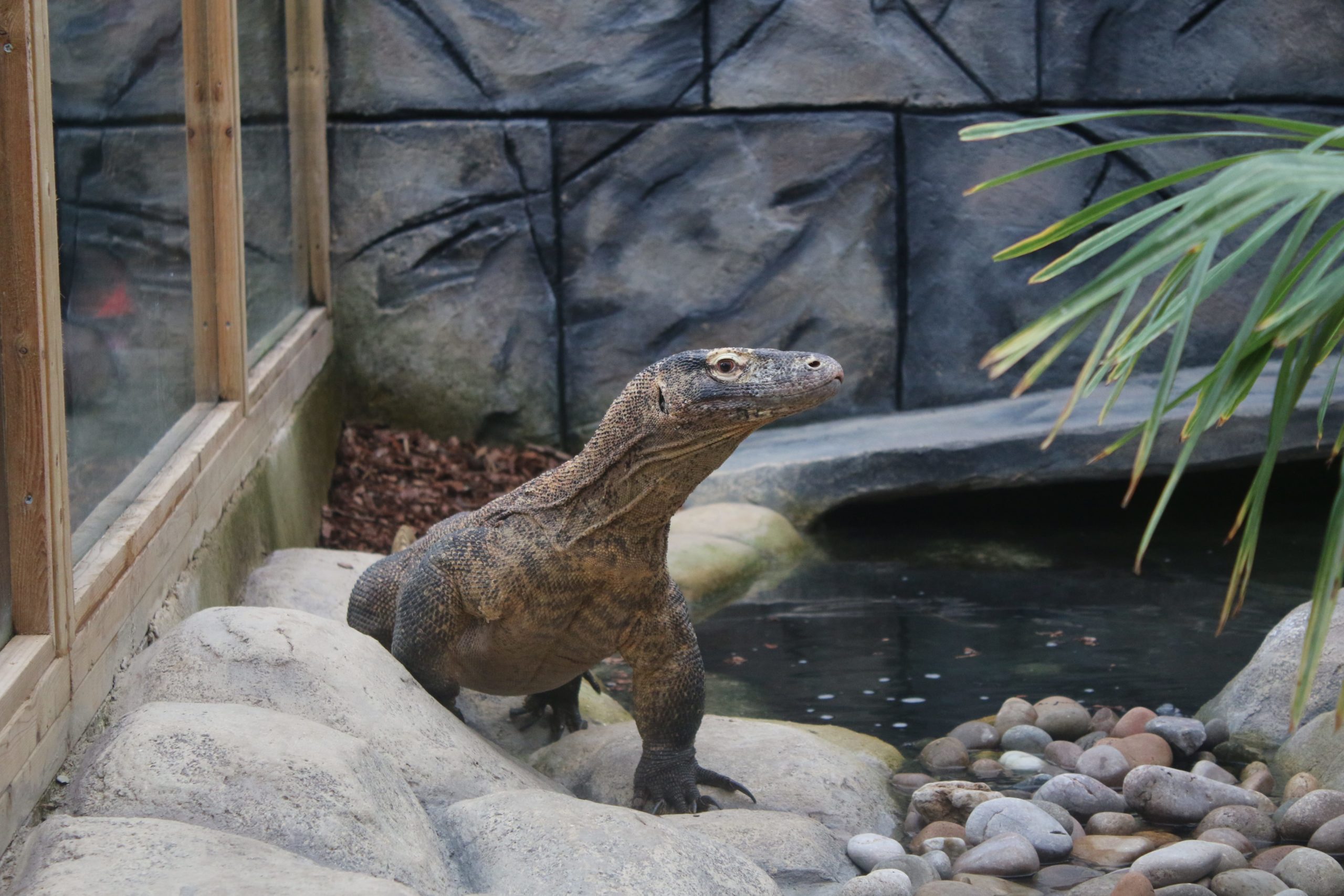Dotted amongst our larger crocodilian displays, you can see our Komodo Dragon, Lace Monitor, and Merten’s Water Monitor. The monitor lizards – known as ‘goannas’ in Australia, which is home to many of the world’s monitor species – are some of the largest reptiles around. These intelligent lizards have large forked tongues similar to the snakes, used to ‘taste/smell’ the air to help them locate food. They also possess a sharp set of claws, serrated teeth, and tail that can be used as a whip. So, these guys have great self-defence! The largest living lizard is the Komodo Dragon. Our male Komodo is Batu, and he showcases the species beautifully. These powerful animals have a venomous bite that causes the wound to bleed freely. After overpowering their then-weakened prey, Komodo dragons will gorge themselves, and it will be weeks before it will need to eat again.

Batu, our Komodo Dragon
Other lizards include the dinosaur-looking green iguana, the small and nimble green and black tree monitors, and the large caiman lizards. The caiman lizards are experts at crushing their favourite food, snails. Giant Day Geckos, from Madagascar, have the run of our Croc House. These stunning lizards can often be seen along the walls or the handrails in the Croc House. Rather than having sticky feet, many geckos have lots of tiny hairs that use electromagnetic attraction to permit them to move along vertical surfaces.
Of course, we house some beautiful snakes. On display right now are our a pair of large Reticulated Pythons. The largest is 4.7m (15.4 ft) long. These snakes are the longest snake species in the world, and can attain truly giant sizes in excess of 19-20 feet.
Within many of the ponds, you can see various turtle species. Turtles live quite naturally with crocodiles, and we have no need to worry that the crocodiles will eat these guys (notice that we have large turtles in with smaller crocs – for a reason!).
Our huge Galapagos Tortoise group spend much of the warmer days grazing their paddock. During the cold winter days, they are kept inside their warm house. These are the largest tortoise species, and can attain weights exceeding 300 kg. These huge, long-lived tortoises (lifespans can approach – even exceed – 150 years) are strict herbivores, eating high fibre and low protein grasses, weeds and flowers. Our largest tortoise is our male, appropriately called Dirk! He’s a character, if not just a little naughty!

Dirk, our large male Galapagos Tortoise
Housed with our iguana and Caiman lizards, we have some Red-Footed Tortoises. These forest-dwelling tortoises are herbivorous for the most part and love the humid environment provided within this South American enclosure.
Our Reptile Adoptions
| Species |
Adopted By |
| Komodo Dragon |
Ben Parry |
|
Magnus Ferguson |
|
Samuel Lickiss |
|
Austin Stevens |
|
Sid Ratigan |
|
Jack Darby |
|
Albie Dicknell |
|
Tim Vacara |
|
Sam Davies |
|
Jered Warren |
|
Dylan Baker |
|
|
| Lace Monitor |
Matthew Robins |
| Reticulated Python |
Anne Tiller |
|
|
| Galapagos Tortoise |
Ruth Peacock |
|
Lewis Brindley |
|
RJ Nicholls |
|
Lincoln Hamilton |
|
Henry Sharley |
|
|
|
|
|
|
|
|
| Emerald Tree Boa |
|
Reptile Species at the Zoo
| Species |
Scientific name |
| Komodo Dragon |
Varanus komodoensis |
| Green Tree Monitor |
Varanus prasinus |
| Black Tree monitor |
Varanus beccarii |
| Mertens’s water monitor |
Varanus mertensi |
| Lace monitor |
Varanus varius |
| Spiny-tailed monitor |
Varanus acanthurus |
| Caiman lizard |
Dracaena guianensis |
| Giant Day gecko |
Phelsuma grandis |
| Green Iguana |
Iguana iguana |
| Reticulated python |
Malayopython reticulatusis |
| Alligator snapping turtle |
Macrochelys temminckii |
| Amazon River turtle |
Podocnemis unifilis |
| Fly River turtle |
Carettochelys insculpta |
| Galapagos tortoise |
Chelonoidis nigra sp. |
| Red-footed tortoise |
Chelonoidis carbonaria |



